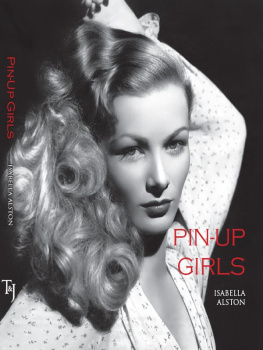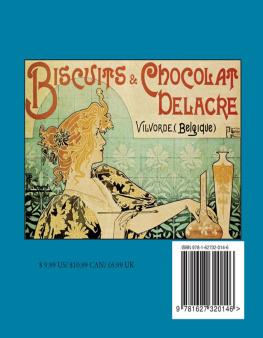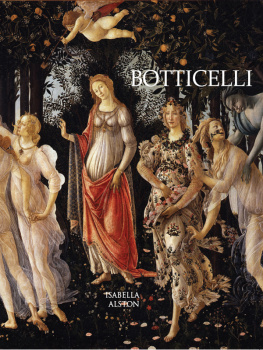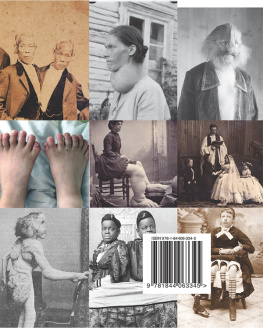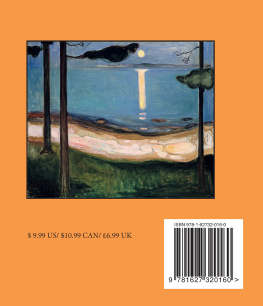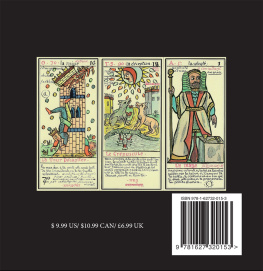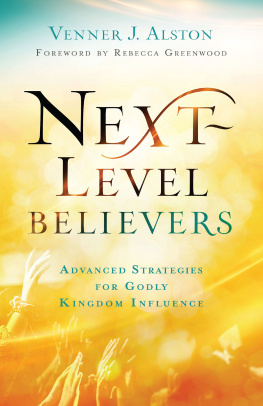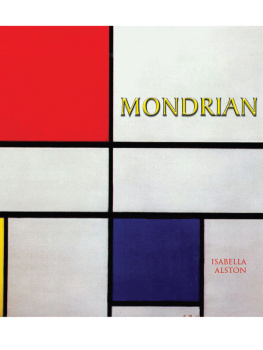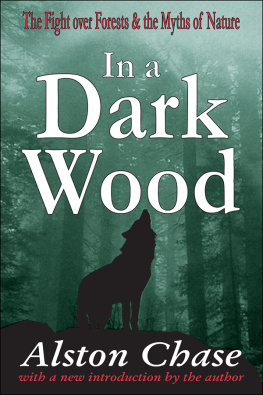Isabella Alston - Pin-up Girls
Here you can read online Isabella Alston - Pin-up Girls full text of the book (entire story) in english for free. Download pdf and epub, get meaning, cover and reviews about this ebook. year: 2014, publisher: Taj Books International, genre: Non-fiction. Description of the work, (preface) as well as reviews are available. Best literature library LitArk.com created for fans of good reading and offers a wide selection of genres:
Romance novel
Science fiction
Adventure
Detective
Science
History
Home and family
Prose
Art
Politics
Computer
Non-fiction
Religion
Business
Children
Humor
Choose a favorite category and find really read worthwhile books. Enjoy immersion in the world of imagination, feel the emotions of the characters or learn something new for yourself, make an fascinating discovery.
- Book:Pin-up Girls
- Author:
- Publisher:Taj Books International
- Genre:
- Year:2014
- Rating:4 / 5
- Favourites:Add to favourites
- Your mark:
- 80
- 1
- 2
- 3
- 4
- 5
Pin-up Girls: summary, description and annotation
We offer to read an annotation, description, summary or preface (depends on what the author of the book "Pin-up Girls" wrote himself). If you haven't found the necessary information about the book — write in the comments, we will try to find it.
Pin-up Girls — read online for free the complete book (whole text) full work
Below is the text of the book, divided by pages. System saving the place of the last page read, allows you to conveniently read the book "Pin-up Girls" online for free, without having to search again every time where you left off. Put a bookmark, and you can go to the page where you finished reading at any time.
Font size:
Interval:
Bookmark:
 PIN-UP GIRLS
PIN-UP GIRLS 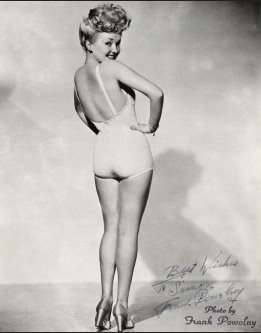 T&j Published by TAJ Books International LLC 2014
T&j Published by TAJ Books International LLC 2014
5501 Kincross Lane
Charlotte, North Carolina, USA
28277 www.tajbooks.com
www.tajminibooks.com Copyright 2014 TAJ Books International LLC All rights reserved. No part of this publication may be reproduced, stored in a retrieval system, or transmitted in any form or by any means, electronic, mechanical, photocopying, recording, or otherwise, without the prior written permission of the Publisher and copyright holders. All notations of errors or omissions (author inquiries, permissions) concerning the content of this book should be addressed to . The Publishers thank the Private Collection of Kevin Prochaska and Patrick Hitte, as well as the unidentified families and estates of the artists whose work appears in this book. We have made our best efforts to contact the owners of copyrights for all art reproduced herein. Most publishers of calendar art no longer exist and, in most cases, the art has now fallen into public domain.
ISBN 978-1-84406-264-5 Hardback
978-1-62732-005-4 Printed in China 1 2 3 4 5 18 17 16 15 14 PIN-UP GIRLS  T&J I S A B E L L A A L S T O N T he image most indelibly linked to the term Pin-Up Girl is a busty, long-legged, beautiful woman posing in a revealing outfit, or even nude, on calendars, posters, and in magazines during the World War II years. These images make up the quintessential and most recognizable Pin-Up Girls, although they are only representative of a specific era in pin-up history. The Pin-Up Girl has actually been around since the late 19th century, when actresses and cabaret stars of the period used photographs of themselves as a promotional tactic. This format was somewhat revolutionary because until that point, women were not expected to flaunt their image in public or in private. And if a woman did, she was considered to be of an unsavory nature. The actresses and other female performers who pioneered the pin-up were generally not women of polite society, but they were popular enough with their fans that they were not publicly shamed.
T&J I S A B E L L A A L S T O N T he image most indelibly linked to the term Pin-Up Girl is a busty, long-legged, beautiful woman posing in a revealing outfit, or even nude, on calendars, posters, and in magazines during the World War II years. These images make up the quintessential and most recognizable Pin-Up Girls, although they are only representative of a specific era in pin-up history. The Pin-Up Girl has actually been around since the late 19th century, when actresses and cabaret stars of the period used photographs of themselves as a promotional tactic. This format was somewhat revolutionary because until that point, women were not expected to flaunt their image in public or in private. And if a woman did, she was considered to be of an unsavory nature. The actresses and other female performers who pioneered the pin-up were generally not women of polite society, but they were popular enough with their fans that they were not publicly shamed.
In this era of pin-up, women were particularly attuned to creating a unique look in order for their image to be instantly recognizable, able to garner them the necessary attention to draw crowds and fans whom they depended on to make their living. The late-19th-century pin-up was one of the first campaigns to promote a womans sexuality as publicity, and it worked. These women used their bodiestypically in a very tasteful mannercoupled with their intelligence to get what they wanted. They knew what men desired and they used that knowledge to their advantage. Perhaps, these early Pin-Up Girls were the earliest frontrunner of the womens liberation movement. In the earliest era of pin-up, before the turn of the 20th century, the Gibson Girl, created and drawn by Charles Dana Gibson, was a precursor of the pin-up art that would become so popular in the 1940s and 1950s.
The Gibson Girl emerged in the 1890s, an artful rendering that combined a fragile, beautiful woman with a curvy fgure, saved from promiscuity by a respectable demeanor. This was new territory. In the past, a voluptuous woman was almost always depicted as lewd or immoral. The Gibson Girl was perceived as a modern woman. She was educated, relatively independent, and intelligent, and adhered to the accepted norms and mores of proper society. Thus, she was accepted as pioneering but respectable, serving as an ideal to which many young women could aspire.
Another critical element of the Gibson Girl mystique centered around the dominant position she held over men despite her apparent fragility. Gibson often illustrated her as looking down on the male sex. The Gibson Girls aloof sense of self-possession, combined with her beautyand poise, created an irresistibly dynamic female, which never ceased to intrigue the male sex because they could never fully possess her. The World War II and later Pin-Up Girls shared this reason for appeal. They were not to be possessed, only viewed and lusted after. As fashions changed and the female sex was liberated politically as well as in the home with the advent of the vacuum cleaner and the washing machine, the groundbreaking Gibson Girl slowly dwindled from popular culture but was never forgotten.
She was the first defnitive sex icon in America and laid the ground rules for what future generations of American men and women understood to be the basis of feminine beauty. 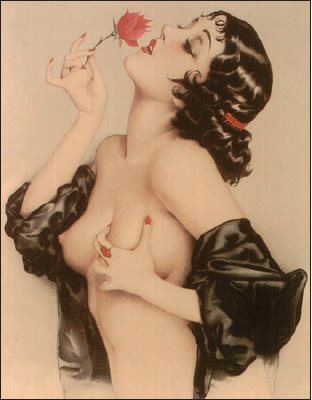 Memories of Olive
Memories of Olive
1920, Alberto Vargas (18961982)
Olive Thomas, who performed in the Ziegfeld Follies,
commissioned by Florenz Ziegfeld Actresses and burlesque dancers in the early 20th century used photography of themselves in provocative poses as a means of self-promotion. Some of the most well-known women in this category include the silent screen star Clara Bow and the exotic dancer Josephine Baker. Raphael Kirchner, a French artist, took the Gibson Girl a step further in his drawings of women, primarily produced during the era of World War I. Most were in postcard format. Kirchner is considered by some as the father of pin-up, inspiring Alberto Vargas in his well-kown work 30 years later.
Paul Chabas, also French, painted numerous nudes and added substantially to the earliest body of pin-up art. But pin-up art was not the sole orbit of men. Mabel Rollins Harris created soft pastels of nudes from the late 1920s and into the 1930s. Much of her pin-up work illustrated calendars. The notorious Pin-Up Girl, scantily clad, the subject of a photo or artwork specifically designed to be titillating to the male gender, did not fully develop until the early 1940s. The pin-up genre ran the gambit, both in art and photography, from simply the image of a glamorous and beautiful woman to what was considered quite risqutotal nudity.
Many Pin-Up Girls would make a mark for themselves later as models or actresses, but the launching pad of their careers was a growing market for these cheesecake images. Actresses such as Marlene Dietrich, Cyd Charisse, Betty Grable, and Sophia Loren are just a handful of examples. The increasing consumer demand for the pin-up came first and foremost from the American military as soldiers were deployed in droves to Europe and later to the Pacific. These soldiers and sailors, mostly new recruits, had to leave behind wives and girlfriends to face the devastating conditions of war in which they lived in constant fear for their lives. The unknowns and uncertainties Americas fighting men dealt with daily were difficult to escape. The pin-ups, however, offered a welcome distraction if only for a few dreamy minutes.
The photos, usually of the hottestmovie stars of the day such as Betty Grable and Rita Hayworth, and drawings of Pin-Up Girls represented what waited for them at home after the war was won and over. In the midst of a dark and dismal present, the future was lit by the warm come-hither smile of a sexy lady waiting on the other side of a teeming sea. Bruno Bernard, who worked as Bruno of Hollywood, captured a wide array of pin-up poses with his camera in the 1940s and 1950s. He fled to the United States from Germany in 1937 at the age of 26. He had served as the general secretary of the Jewish underground movement and his life was under threat. In 1934, he had earned a doctorate in criminal law at Kiel University and he did post-graduate work at the University of Berkeley.
Next pageFont size:
Interval:
Bookmark:
Similar books «Pin-up Girls»
Look at similar books to Pin-up Girls. We have selected literature similar in name and meaning in the hope of providing readers with more options to find new, interesting, not yet read works.
Discussion, reviews of the book Pin-up Girls and just readers' own opinions. Leave your comments, write what you think about the work, its meaning or the main characters. Specify what exactly you liked and what you didn't like, and why you think so.

